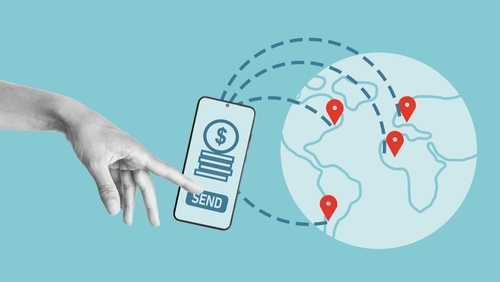Switching how you send money internationally is a big decision. Whether you’ve been using the same service for years or recently discovered better options, changing your remittance method requires careful consideration of several key factors.
The right choice depends on your specific needs, priorities, and circumstances. Some people value speed above all else, while others focus on getting the best exchange rates. Understanding what matters most to you will help guide your decision.
This guide covers the essential criteria to evaluate before making the switch, ensuring you choose a remittance method that truly serves your needs.
Evaluate Transfer Speed and Delivery Options
Transfer speed varies significantly between different remittance methods. Bank transfers typically take 1-5 business days, while some digital services can deliver funds within minutes or hours.
Consider your typical sending patterns. Do you usually plan transfers in advance, or do you often need to send money urgently? Emergency situations require faster delivery options, which may come with higher fees.
Delivery methods also affect speed:
- Bank deposits are usually fastest for digital transfers
- Cash pickup offers immediate availability once processed
- Mobile wallets provide instant access in supported regions
- Home delivery takes longer but offers convenience
Match your delivery preferences with your recipients’ needs. If they don’t have bank accounts, cash pickup locations might be essential. If they prefer digital transactions, mobile wallet transfers could be ideal.

Assess Total Cost Transparency
Understanding the complete cost structure helps you avoid surprises and compare options accurately. Look beyond just the upfront transfer fee.
Key cost components include:
- Transfer fees (fixed or percentage-based)
- Exchange rate margins
- Intermediary bank charges
- Recipient fees
Some services advertise low transfer fees but apply less favorable exchange rates. Others offer competitive rates but charge higher upfront fees. Calculate the total cost for your typical transfer amounts to get an accurate comparison.
Ask for a complete breakdown of all costs before committing. Reputable services provide clear, upfront pricing without hidden charges.

Consider Ease of Use and Accessibility
The user experience matters, especially if you send money regularly. Evaluate how easy it is to initiate transfers, track payments, and get support when needed.
Digital platforms typically offer:
- 24/7 availability for initiating transfers
- Mobile apps for convenient access
- Real-time tracking and notifications
- Digital receipt storage
Traditional methods might provide:
- In-person assistance and guidance
- Familiar processes you’re already comfortable with
- Physical locations for cash deposits
- Personal relationships with staff
Consider your comfort level with technology and your access to internet services. Some areas have limited connectivity, making traditional methods more reliable.

Review Security and Regulatory Compliance
Financial security should never be compromised for convenience or cost savings. Verify that any remittance provider maintains proper licensing and regulatory compliance.
Look for these security features:
- Government licensing and regulation
- Encryption of personal and financial data
- Identity verification processes
- Fraud monitoring systems
- Customer fund protection policies
Licensed providers must follow strict anti-money laundering (AML) and know-your-customer (KYC) regulations. These requirements protect both you and your recipients from fraudulent activities.
Research the provider’s reputation and read reviews from other customers. Long-established companies often have proven track records, while newer services might offer innovative features but less operational history.

Examine Coverage Areas and Currencies
Ensure your chosen service covers all the destinations and currencies you need. Some providers specialize in specific regions, while others offer global coverage.
Consider these coverage factors:
- Countries where you send money
- Available currencies for each destination
- Payout locations and partner networks
- Future sending needs you might have
If you send money to multiple countries, a provider with broad coverage might be more convenient than managing relationships with several specialized services.
Verify that exchange rates and fees are reasonable for all your destination countries, not just your primary one.

Evaluate Customer Support Quality
Reliable customer support becomes crucial when issues arise with your transfers. Test the support channels before switching to understand response times and service quality.
Assess support through:
- Available contact methods (phone, chat, email)
- Operating hours and time zone coverage
- Language support for your preferred communication
- Response times for different inquiry types
Try contacting support with pre-switching questions to gauge their helpfulness and knowledge. This gives you insight into what to expect if problems occur later.

Frequently Asked Questions
How long should I research before switching remittance methods?
Take at least a few weeks to research and compare options thoroughly. Test customer support, read terms of service, and consider doing a small test transfer before switching completely.
Should I switch immediately if I find a cheaper option?
Consider all factors, not just cost. A slightly more expensive service might offer better speed, security, or customer support that justifies the difference. Evaluate your total experience and needs.
Can I use multiple remittance services simultaneously?
Yes, many people use different services for different purposes. You might use a fast service for emergencies and a cost-effective option for routine transfers. Just ensure you can manage multiple accounts effectively.
What should I do if my new remittance service has problems?
Keep your previous service active for at least a month after switching. This provides a backup option while you test the new service. Document any issues and contact customer support promptly.
How often should I review my remittance method choice?
Review your choice annually or when your sending patterns change significantly. New services enter the market regularly, and existing providers update their offerings, so periodic evaluation ensures you’re still getting the best option.
Making Your Switch Decision
Switching remittance methods requires balancing multiple priorities based on your unique situation. No single service excels in every area, so focus on what matters most for your specific needs.
Start by listing your priorities in order of importance. Create a comparison chart including the factors most relevant to your situation. Consider doing small test transfers with your top choices before fully committing.
Remember that the best remittance method is the one that consistently meets your needs while providing reliable service and transparent pricing. Take the time to choose wisely, and don’t hesitate to switch again if your circumstances change or better options become available.
